It might have only been going for two weeks, but the contest to replace Nicola Sturgeon has already revealed a lot about the SNP.
Perhaps most visibly, it has exposed the startling lack of ability at the top of the party.
After just 14 days, SNP members are faced with having to decide who is the least worst option – the complete antithesis of the “wealth of talent” Sturgeon promised at the start of the contest.
Then there are the ideological divisions that have been brought to the fore, most obviously with Kate Forbes’ views on same sex marriage.
And, finally, there is the gross incompetence of the campaign itself.
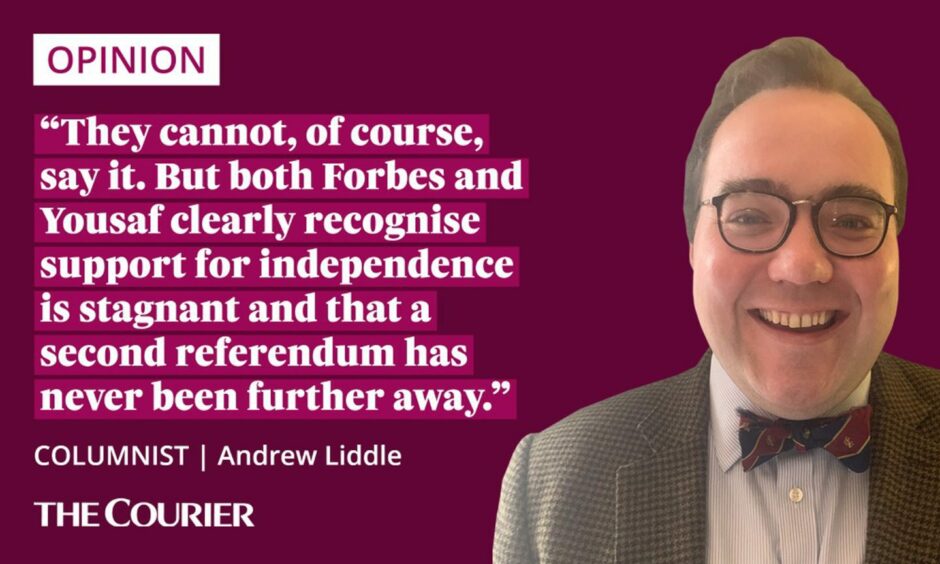
This is partly down to the party hierarchy, who shamefully tried to ban journalists from hustings only to partially reverse the decision hours later.
But it is also due to the candidates themselves.
Outside hope Ash Regan, for instance, decided to show her commitment to the dualling of the A9 by posing alongside the trunk road in the pitch black, illuminated only by the headlights of the car that had presumably driven her there.
If there was ever a photo to make you realise a candidate for a community council – let alone First Minister – was not credible, this was it.
Ash Regan in the dark by a road.
(via @TheScotsman) pic.twitter.com/huWIbNAL1l
— Rich Simcox (@RichSimcox) March 1, 2023
Amid the cacophony of shambles one thing has, however, been particularly notable – Forbes and Humza Yousaf’s reticence on independence.
Forbes and Yousaf pledges side-step independence
Despite a captive audience to preach to – the choir chained to the stalls – the credible contenders have made no flagship announcement or significant intervention on how to deliver a second referendum or persuade the country to back separation.
They are offering no roadmaps or economic prospectuses or legal shenanigans.
There is no serious suggestion they will even keep the SNP’s manifesto commitment of holding another referendum before 2026.
Instead, and unusually, they seem determined to talk about the day-to-day business of government.
For her part, Forbes has so far chosen to take aim at the Deposit Return Scheme as part of a wider pitch to replant the SNP’s pro-business roots that have been left untended, if not actively ripped up, by Sturgeon.
In fairness, the DRS – as it has become known – is clearly ill-conceived and onerous, adding costs to business and pushing up prices for consumers at a difficult time for both.
Yousaf meanwhile has decided to focus his campaign on a series of social spending commitments, apparently oblivious to the fact he sits in a government that could make these spending decisions already.
Hustings hint at Forbes and Yousaf caution on independence
This reticence was best reflected in the first hustings, which revealed the emerging unspoken consensus between the two frontrunners. That not only is there no path to a second independence referendum currently, it would be unwise to have a second referendum now even if there were.
Forbes, for instance, began by setting a ludicrously high bar for a second referendum, suggesting a majority of votes – not just seats – would provide a mandate.
That this commitment was couched in radical language to deceive the diehards makes it even less, rather than more, of a credible prospect.
Forbes then went on to focus on the need to “maximise support” for independence by proving the SNP’s competence in government, implicitly acknowledging public appetite was not currently large enough – and that the SNP government was currently incompetent on a range of issues.
Yousaf, meanwhile, admitted there was no “quick way to get independence,” recognising it will take patience to get the movement out of its current cul de sac.
Gradualism – seeking to slowly build a consensus for independence – rather than fundamentalism – demanding independence immediately – once again appears to be the watchword in the senior echelons of the SNP.
Without independence, what reason is there to vote for either leader?
Such a view is a direct repudiation of Sturgeon’s independence strategy since mid-2016.
And it is a tacit recognition that – for all the bellicose rhetoric, false dawns, and Unionist panic – the SNP has massively failed to increase the appeal of independence since the last referendum.
They cannot, of course, say it. But both Forbes and Yousaf clearly recognise support for independence is stagnant and that a second referendum has never been further away.
Should this gradualist attitude be carried through the remainder of the leadership contest and into government, it will herald a refreshing change for the beleaguered majority who just want a devolved government focused on public services and the economy.
But the recognition that a second referendum is a fantasy also represents a serious electoral challenge for the SNP, not least as the Labour Party continues its resurgence at a UK level and, it seems, in Scotland too.
For the question that will face either Forbes or Yousaf is this: without Sturgeon’s personal vote or the prospect of a second referendum, how many people will actually still vote for you?
The moment when that question will be asked remains some way off. But based on current performance, my guess would be not very many.
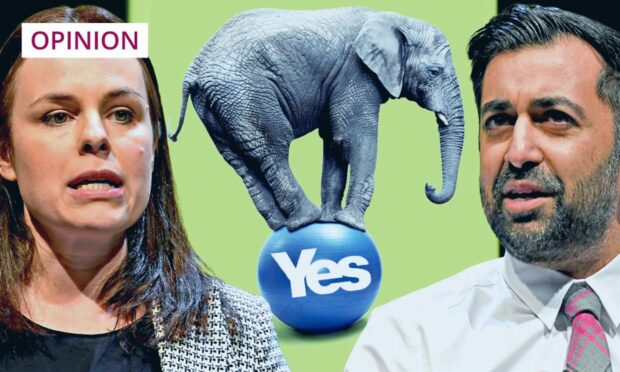
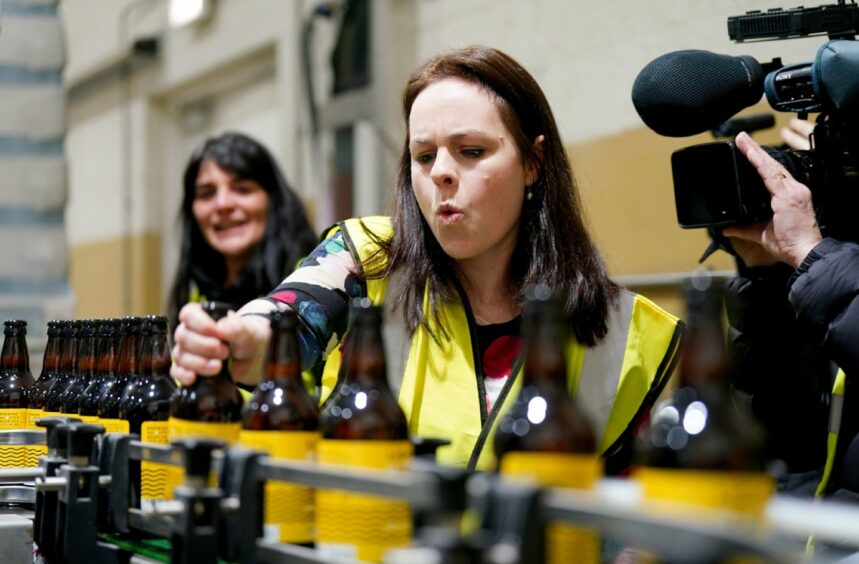
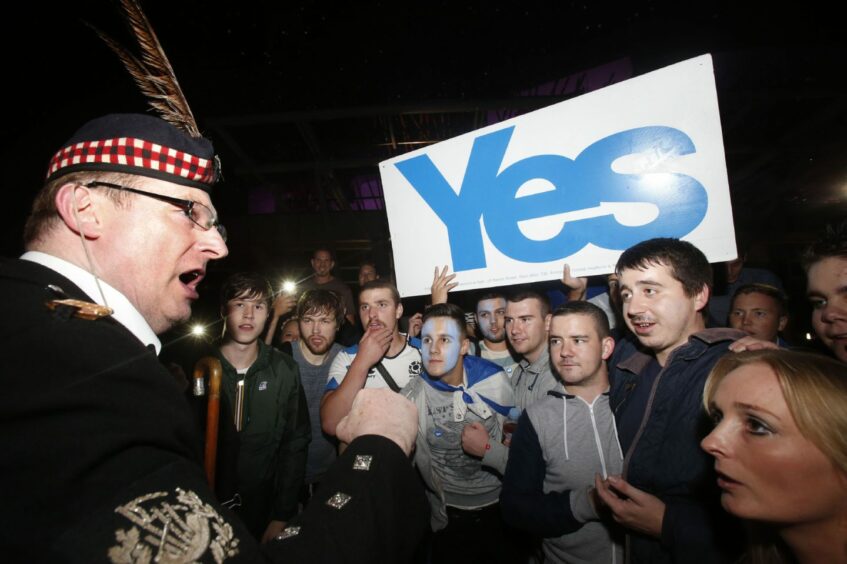
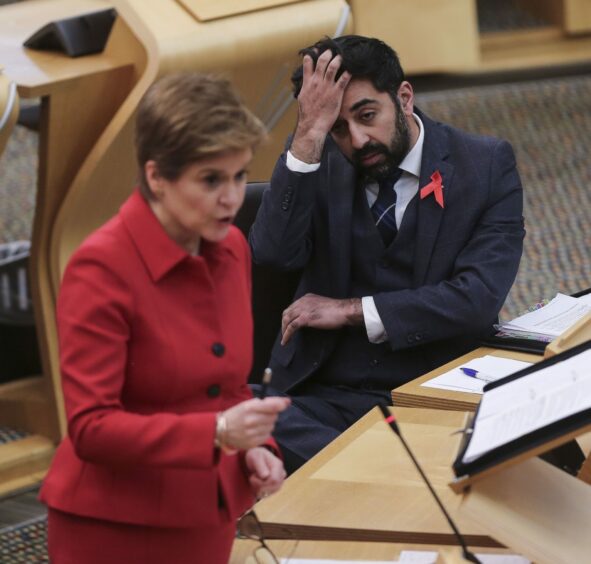










Conversation